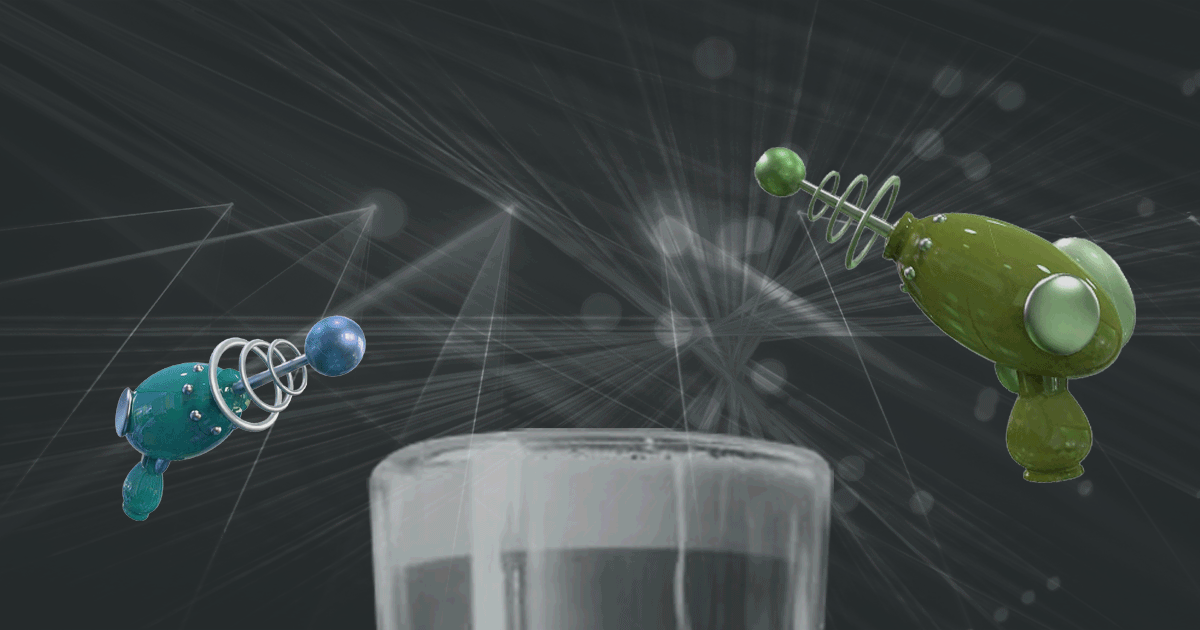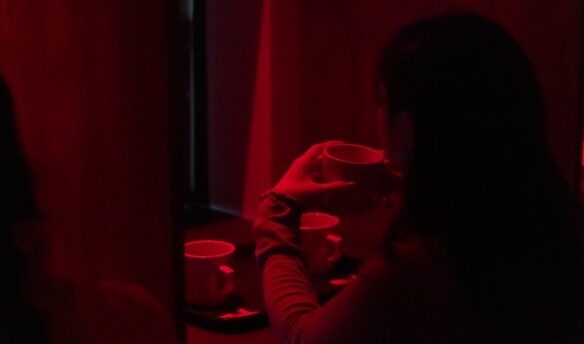Everybody loves lasers. This is a statement of fact, corroborated by a long-running Saturday Night Live sketch and countless movies and television shows. James Bond’s nemesis Goldfinger and his Austin Powers-equivalent Dr. Evil use lasers nefariously, while on Star Trek, the Federation utilizes them for an array of beneficial purposes.
Beyond the antics of supervillains and sketch comedians, lasers have also proven incredibly useful. From the mundane (think printers and barcode scanners) to the extraordinary and innovative (laser eye surgery, fiber optic cables—lasers were even used to discover the gravitational waves between two black holes in 2015), lasers have changed the way we operate. Can they change the way we make cold brew?
From Fiction to Fact
Many modern applications of laser technology—or any technology—involve doing things faster. Likewise, many of the technologies we use in the real world started as whimsical ideas, existing only in the fictional world. There’s no better example of this than Star Trek: everyone has a communicator—er cell phone—in their pocket. Those communicators even contain pretty remarkable universal translator apps.
In the late 90s’ a scientist was granted a patent for a ‘phaser’—Star Trek’s version of a raygun. While not on the same level of sophistication as its Star Trek equivalents, directed-energy weapons ranging from small arms to ship-mounted cannons, Hans Eric Herr’s invention used lasers to generate strong beams of ultraviolet light, enough to stun or kill.
We’re still waiting on a few sci-fi gadgets to become viable: warp speed might take a century or two to perfect, and if you’ve seen The Fly, you’ll know how transporters worked out for Jeff Goldblum.
And, of course, we continue to wait for the on-demand meal creation of the replicator. In the meantime, scientists in Germany have set their lasers to ‘extract’ to develop a cold brewing process that is upwards of 300 times faster than traditional brewing methods.
Cold Brew: The Final Frontier
Cold brew—coarse-ground coffee steeped in cold water then filtered—is notoriously slow to make, generally needing a steep time of between 16 and 20 hours. Aside from the basic sci-fi coolness of drinks brewed with lasers, this experiment could herald a new age of cold brew convenience and made-to-order coffee concoctions.
The idea to experiment with lasers and coffee came to Dr. Anna Rosa Ziefuß, a scientist in the technical chemistry department of the University of Duisburg-Essen (UDE), as part of an ideas competition put on by working group chair Professor Stephan Barcikowski. Previously, Dr. Ziefuß’s work had focused on the interaction between laser light and inorganic materials such as gold. Still, Prof. Barcikowski encouraged the team to think beyond their own research to new applications of ultra-short pulsed lasers.
Other inspiration came from less academic quarters. It was the television show ‘The Big Bang Theory,’ in which, Ziefuß says, “the actors irradiate everything possible with a laser,” that prompted her research. “Why not try this with coffee powder?”
The team at UDE used one of the lab’s ultrashort-pulsed lasers to zap ground coffee suspended in water 80,000 times per second for three minutes, extracting caffeine and other flavor compounds before straining it through a regular paper coffee filter. Because the process never raised the temperature of the liquid more than a few degrees, the resulting beverage can best be described as cold brew. In the paper, published in the journal Nature, the researchers deliciously describe the brew as a “brownish-colored suspension, strongly reminiscent of a freshly brewed coffee even after filtration.”
Warp Speed Cold Brew
The researchers used a light-roasted Costa Rican coffee from Essen-based Coffee Pirates, rested for ten days and coarsely ground. Ziefuß says that the team relied less on personal preference and more on hard data when analyzing the finished brew. “As taste differs between humans, scientists will always refer to measurements,” she explained. “Therefore, we analyzed the liquid phase (the final liquid coffee) and the head-space (the vapor after heat treatment) of the laser coffee and the traditional cold-brew variant. Within our data, we found no significant differences between the composition of both.”
In other words, the standard-issue cold brew and the futuristic sci-fi laser coffee tasted basically the same. A coffee brewed with lasers in three minutes harkened the same sensation and flavors as cold brew steeped for 24 hours—and the lasers did it 300 times faster. Imagine if your hurriedly microwaved leftovers the next day tasted as good as when you were eating the carefully prepared, lovingly presented meal the night before (now that’s science fiction).
To analyze the final product, researchers compared the laser brew against the standard cold brew, along with a regular hot-brewed coffee. The researchers found the laser brew’s acidity comparable to cold brew, but lower than the hot-brewed coffee. Caffeine content, meanwhile, was 25 milligrams per 100 milliliters, less than the cold brew and closer to the hot-brewed coffee—an added bonus for those of us for whom cold brew is too caffeinated.
Alongside colleague Tina Friedenauer, Dr. Ziefuß is exploring the commercial possibilities of this speedy cold brew. Naming the project LEoPARD, an acronym for ‘Laser-based Extraction Offers Pure and Advanced Refreshment Drinks,’ the colleagues also hope to utilize the ultrafast laser extraction process for other products. “We want to expand our production from coffee to further aroma compounds (like tea or matcha) in the future,” Ziefuß says.
Science fiction is always brewing up new ideas, which inspires scientists to attempt to bring those ideas into reality. In the near future, you might be able to walk into your local coffee shop and order a cold brew—or even a “tea, Earl Grey, hot”—and watch as your beverage is made in front of your eyes using lasers.















